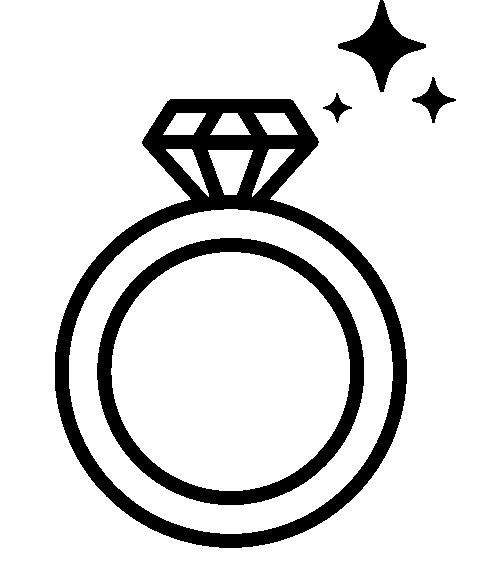

Out of the clamor of unimaginable heat and earthly pressure, natural diamonds were formed. So what makes one diamond different from another? What are the features that determine a diamond beauty and a diamond quality? Curious about the cut, colour, clarity and carat? This blog aims to answer all your questions so you can make an informed purchase. This is essentially what are the 4 Cs of Diamonds.
Prices between different types of diamond vary, and it is important that the buyer understands exactly what they are paying for. Ultimately, knowledgeable clients are happy clients. A higher quality diamond will cost more – the quality being determined according to cut, colour, clarity and carats. It’s an agreed-upon standard in the industry.
What are The 4 Cs of Diamonds?
The 1st C – Understanding Diamond Cut
The diamond cut is known to have the greatest impact on a diamond sparkle. The ideal cut is not too deep, nor too shallow, causing the light to radiate from the top of the diamond and not get lost in the bottom or sides. The Ideal cut, representing 3% of all diamonds, is the highest quality which reflects almost all of the light that enters, followed by very good, good, and fair cuts.

The 2nd C – Understanding Diamond Color
The second most important factor that influences a diamond’s appearance, noticed immediately after the sparkle, is the colour, or rather, the absence of colour. A diamond is graded based on the lack of colour, marking its transparency. The color range (also called color grade) scales from letters D to Z, as follows:
- D; Absolutely colorless. The perfect diamond.
- E-F; Colorless (minute traces of colour can be detected by an expert gemologist).
- G-H; Near colorless (colour is difficult to detect unless compared side by side to higher grades).
- I-J; Near colorless diamonds. Slightly detectable warm colour tone.
- J-Z; Noticeable color. Yellowish, yellow tint, appearance, even to the naked eye.

The 3rd C – Understanding Diamond Clarity
A reference to the imperfections, called inclusions, within the diamond that are usually only visible under a microscope. Although they are not easily visible, the inclusions still impact the way light is transmitted and reflected through the body of the diamond. The fewer and less visible the inclusions are, the higher the grade of the diamond you are purchasing. Therefore, you want to avoid visible inclusions. The scale (also called diamond clarity grade or diamond clarity chart) goes as follows:
| FL & IF | Flawless & Internally Flawless. Even under 10x magnification, inclusions are not visible. Less than 1% of all diamonds formed are flawless and less than 3% have very slight blemishes that are considered internally flawless. |
| VVS1 & VVS2 | Very, Very Slightly Included. Inclusions are minuscule and very difficult to see under a microscope even for a professional. VVS1 has very few inclusions while VVS2 has slightly more of them. |
| VS1 & VS2 | Very Slightly Included. This refers to minor inclusions that are difficult to see (VS1) or easy to see (VS2) under a microscope. |
| S1 & S2 | Slightly Included. Noticeable to the naked eye under close scrutiny. Inclusions in S1 diamonds are sometimes noticeable whereas the inclusions of S2 diamonds are often noticed without magnification. |
| I1 | Included. Obvious inclusions visible to the naked eye. |
The 4th C – Understanding Diamond Carat
Diamond carat weight is how the weight of the diamond is expressed. Keep in mind that a similar sized diamond with a lower quality cut and clarity will appear smaller even with the same number of carats. The price of diamond stones increases exponentially as carats do, since the rarity of diamonds is correlated to the carat size. It’s very difficult to find a large diamond with few imperfections and transparency all the way through.
This is where it all comes together. Finding your preferred balance between the type of cut, number of imperfections and size of the diamond will allow you to select your piece based on the desired appearance and your particular budget.
In any case, be sure to purchase from an experienced jeweler who has a thorough understanding of the impact of the 4 C’s. The same diamond can be elevated or degraded based on how it is handled and the amount of light it receives or even its color (blue light, regular lighting, white light, combination lighting…). Donj makes sure to establish an understanding with all of our clients, finding the correct balance of characteristics that will shape the diamond to match the user’s intentions as precisely as possible.

Other things to know about diamonds
Is a Diamond Shape Always the Same?
Not really. Diamonds come in all shapes and sizes. As there is a brilliant diamond for someone or a larger diamond for someone else, its shape varies slightly thanks to the use of diamond cutters. With this tool, the diamond professional can give the piece any shape they want. Whether it’s the iconic round brilliant cut (for maximum sparkle), the very romantic heart shape or the very rare Lily cut, the possibilities are endless.

Which are the Most Popular Shapes And Cutting Styles?
There are mainly ten types of rough diamond shapes that they’re polished into.
Some have become more popular because they’ve changed with consumer tastes and fashions. Among the shapes, the most popular one is the full cut round brilliants (57 facets). Diamonds that are cut to their ideal proportions offer the best sparkle, color, and light performance compared to other types of shapes.
According to the most recent statistics, the cushion cut has surpassed the princess cut in terms of popularity among Canadian consumers. On the one hand, shapes like the triangular cut are considered as rare and seldom seen in the commercial market, but they may still appeal to people who want exquisite choices.
If you’re looking for something that combines some of the best features of both the emerald and oval cuts, you may want to consider taking a look at the Asschers or Radiants.
Why Do Diamonds Look Gray?
The main reason why a diamond stone appears brighter in daylight than it does at night is because it has high light performance. A better cut makes a diamond look brighter when viewed in direct sunlight. Viewing diamonds outside under direct sunlight is not recommended since they may be damaged by the heat. Instead, view them under a broad leaf tree where they won’t get too hot.
Why Do Diamonds Turn Yellow?
If your white diamond develops a yellowish tint, it may be due to dirt or other substances. Even a thin layer of dust or dirt makes a colorless diamond look slightly yellow. Other possible causes include hairspray, soaps, and makeup. Over time, these substances can build up, making them look stained and discoloured. But it can easily be cleaned at home or professionally at your jeweller.
How Can You Make Sure a Diamond Is What the Jeweler Say It Is?
Only buy diamonds that are graded by either the Gemological Institute of America (GIA) or the American Gem Society (AGS). Check the laser inscription on the diamond to make sure that it matches the information on the grading certificate. You should also look at the diamond’s color grade and its clarity grade.
What are Conflict Diamonds?
Conflict diamonds – or blood diamonds – are diamonds mined in warzones and sold in order to fund the ongoing conflicts in the region.
Today, most jewelry companies adopt transparent ethical sourcing policies and conflict-free diamonds are becoming a marketing tool for many jewelers.
Ethical sourcing practices are an important part of the fashion industry. They should be celebrated and encouraged. By boycotting the sale of blood diamonds, we show our disapproval of using diamonds for violent purposes.
What are Tension Set Rings?
Most traditional diamond rings usually have their feature stones set in prong settings. Typically, diamonds are set into jewelry using a special tool called a “setting saw.” The setting saw has two blades that cut through the sides of the diamond and bend the arms of the metal to hold the diamond in place. On the other hand: Tension set diamonds are held in place by pressure exerted by the ring onto the diamond’s girdle.
With tension settings, the feature diamond is shown with a minimal amount of coverage by metal. Such rings usually become the center-of-attention at social gatherings.
While a tension setting may be a wonderful alternative to Solitaire prong setting rings, they have their own limitations too. For example, if you can’t find a three-stone tension ring, then you may not be able to find one. If you can’t find a tension setting that can be resized, you won’t be able to resize it.
How Do I Clean a Diamond?
Diamonds are known to be dirt and oil magnets. And dirt, oil and dust can destroy a diamond’s ability to sparkle because light has no ability to pass in and out anymore. Every so often, possibly once every month, we recommend simply cleaning the stone with a soft bristled toothbrush as well as some soap with warm water.

It’s just that easy. It will restore the lustre and shine of the diamond, and look just as good as it did when it was brand new. Every year, ask your jewelry store to clean your diamond and ring. Their ultrasonic cleaner is the best one for cleaning your jewelry.
Interested in finding the perfect stone? We offer engagement rings, wedding rings, slim rings, and much more in terms of jewelry pieces!
More questions? Give us a shout through our contact us page or send us an email at [email protected]





 My Account
My Account  My Bag
My Bag  My Wishlist
My Wishlist 

